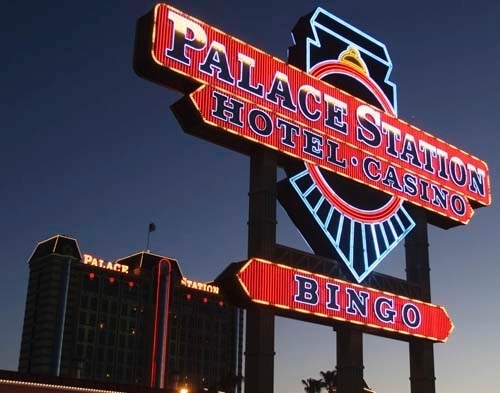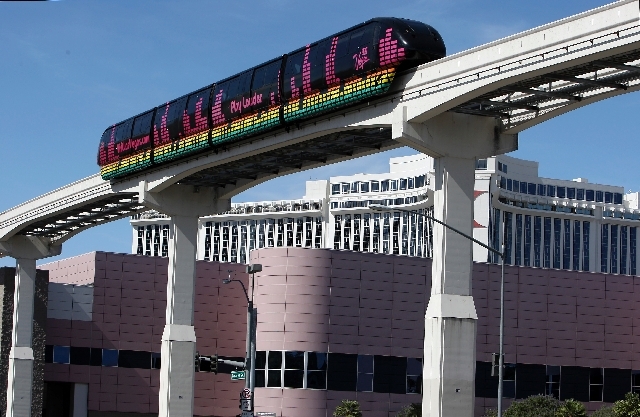Bankruptcy doesn’t come cheap for companies struggling to survive
As Station Casinos’ lead counsel in its Chapter 11 bankruptcy reorganization, the giant law firm Milbank, Tweed, Hadley & McCloy charged $802,000.
But that didn’t include expert advice on navigating the perils and nuances of bankruptcy law, just the time spent compiling and defending the legal bill: a 3,852-page behemoth in six installments that detailed 51,548 hours of work, everything from daylong meetings to six-minute phone calls, totaling $36,418,423.75. Out-of-pocket expenses added another $1.1 million.
With other lawyer and consultant fees included, Station came in with the most shocking sticker price for Las Vegas-related corporate bankruptcy — $89.7 million — during the most recent surge in activity that began about five years ago. Still, at least a dozen other cases topped the $1 million mark, including several in which the collective meters ran past $10 million.
Soaring bankruptcy legal fees have drawn attention nationwide, particularly in venues such as New York and Delaware, which have attracted a much larger flock of big-dollar cases than Nevada.
“The costs of bankruptcy fall on the creditors and employees of the debtor companies,” said Tony West, acting associate U.S. attorney general last month, when announcing new rules to try to tap the brakes. “(B)oth the public and the most sophisticated participants in the bankruptcy process say bankruptcy attorneys’ costs are rising too rapidly.”
Clifford White, director of the U.S. Trustee Program, focused on that in a 2011 speech to justify tighter controls.
While lawyers working for solvent companies have had spending plans and discounts imposed on them in recent years, he said, “in bankruptcy, budgets are rare and charging anything less than a full hourly fee is considered unfair by the bankruptcy bar.”
The U.S. Trustee is the arm of the Department of Justice charged with policing the bankruptcy system.
Attorneys admit that a Chapter 11’s costs may astound people unfamiliar with the process, even a company’s management.
“I constantly hear clients say, ‘Wow, that’s expensive,’ ” said Joe Wielebinski, a partner with the Dallas firm Munsch Hardt Kopf & Harr. “But it’s not cheap any time you involve attorneys and related professionals.”
By their very nature, bankruptcy clients carry greater risk than others that go to court, said Wielebinski, who commuted to Las Vegas to represent CSD, the company that set out to turn entertainer Wayne Newton’s former estate into a theme park.
If a company collapses into liquidation, attorneys might collect only a small fraction of what they put in, or perhaps nothing if creditors repossess all the valuable assets.
As a result, attorneys study a balance sheet and cash flow before taking a case, reinforcing the irony that a company must have money to go bankrupt.
HEMORRHAGING CASH
Relatively small and simple single-asset bankruptcies still predominate in Las Vegas, where a property such as a shopping center or office complex no longer collects enough rent to meet the mortgage payments, according to partner Thomas Fell of Gordon Silver.
“I think it’s a little unfair to the rest of the country to be compared to Delaware and New York,” he said.
For one thing, attorneys here come cheaper. Gerald Gordon of Gordon Silver, the unofficial dean of the local bankruptcy bar, bills at $740 per hour. By contrast, 10 attorneys at Milbank, Tweed topped $1,000 per hour.
On a different level, attorneys often describe bankruptcy as law’s emergency room, where companies hemorrhaging cash while trying to fight off lenders attempting to seize collateral, especially bank accounts, need massive attention in a compressed time.
In that scenario, simple survival takes precedence over how much it may cost to get out alive.
“You have to throw a lot of troops into the breach before the hordes come through,” said Lewis and Roca partner Rob Charles, using a combat analogy. “I don’t know that the costs are out of control, but they are really, really hard to control.”
This also involves pulling in lawyers from different wings of a firm, specializing not only in the workings of the U.S. Bankruptcy Code, but also finance, labor, real estate and government regulation. Often a bill looks like a microcosm of the firm.
Further, Charles said, cash can often be put on the table to smooth over differences between solvent companies. But in bankruptcy, different parties often end up fighting over scraps while trying to foist losses, known as “haircuts” among attorneys, on others.
“The stakes are so high in the big cases, and parties become so zealous in protecting their rights, that they tend to become very expensive,” he said.
Even though the cleanup work of a bankruptcy may go on for several years — the Fontainebleau case is still going more than 3½ years after the unfinished resort was bought by investor Carl Icahn — the main issues often reach a resolution much faster than in conventional litigation, the Dallas-based Wielebinski said.
UNLV law professor Nancy Rapoport, who has developed an expertise in bankruptcy fees, said the problems tend to mushroom in large cases, not small or medium-sized ones.
“Ninety-nine percent of the professionals are not trying to game the system,” she said. “When I call about the questionable stuff, (law firms) are usually pretty apologetic.”
Still, she added, “You just can’t throw people at legal things.”
As the fee examiner in the Station case, her work poring over bills brought reductions of $750,000, although her bill ran $223,000 to identify and negotiate the discounts.
One area that gets out of hand, she said, are the bills for work by a firm’s youngest attorneys, who are often learning as they go.
Fried, Frank, Harris, Shriver & Jacobson, the giant New York firm that represented the unsecured creditors committee in the Station case, listed four summer associates at $290 per hour. Summer associates are law students who are combining an internship with a tryout for full employment with the firm upon graduation.
Other expenses generally include mundane items such as legal research, copies at 20 cents a page, and the price of a telephonic appearance at a hearing instead of traveling to do it in person.
Critics zero in on airfares, meals or ground transportation. In the case of South Edge LLC, developer of the huge Inspirada planned community, Milbank, Tweed was reimbursed for nearly $900 to cover New York-area cab fares.
A judge in a similar case, Rapoport recalled, ruled that the subways worked just as well.
FEES FACE REVIEWS
In a sense, bankruptcy fees make easy targets. In a sense. Certain attorneys get paid from the debtor company’s cash, notably those hired by the company and, if one is formed, a committee representing unsecured creditors. Occasionally, lenders can claim fees when their collateral is worth more than what they are owed.
To get paid, the fees go through a review by the U.S. Trustee and then by the bankruptcy judge, who ultimately approves or rejects them.
For years, the standard format has included detailed descriptions of every speck of work on a case in tenths of an hour, listing attorneys’ hourly rates and expenses down to phone calls for less than $1.
By contrast, fees in other courts typically remain a secret between client and attorney and rarely face scrutiny or even make their way into the record.
Attorneys argue that the review system allows ample opportunity for anyone involved in a Chapter 11 case to object to overcharging.
But, Rapoport wrote last year, “The sheer volume of fee applications in the larger Chapter 11 cases … make a line-by-line review on a timely basis virtually impossible for the (U.S. Trustee) and the courts.”
To try to curb the bills, the U.S. Trustee measures announced in June include provisions to create budgets and staffing plans, disclosing rate increases during a case when they happen, creating bill formats that make for easy keyword searches, and more use of outside examiners, the role Rapoport played in Station Casinos’ case.
These apply to cases with more than $50 million in assets and $50 million in debt.
Attorneys contend that the key provision, budgets, will have little meaning because cases often take surprising turns. Ahern Rentals’ Chapter 11, for example, became much more heated more than a year after the filing when one group of lenders received court permission to launch a takeover fight.
Moreover, attorneys say, costs might help push resolutions to disputes.
“Fees can act as incentives in a strange way,” Wielebinski said. “They force everyone to say, ‘We’ve got to get out of this process.’ ”
Contact reporter Tim O’Reilly at
toreiley@reviewjournal.com or 702-387-5290.























